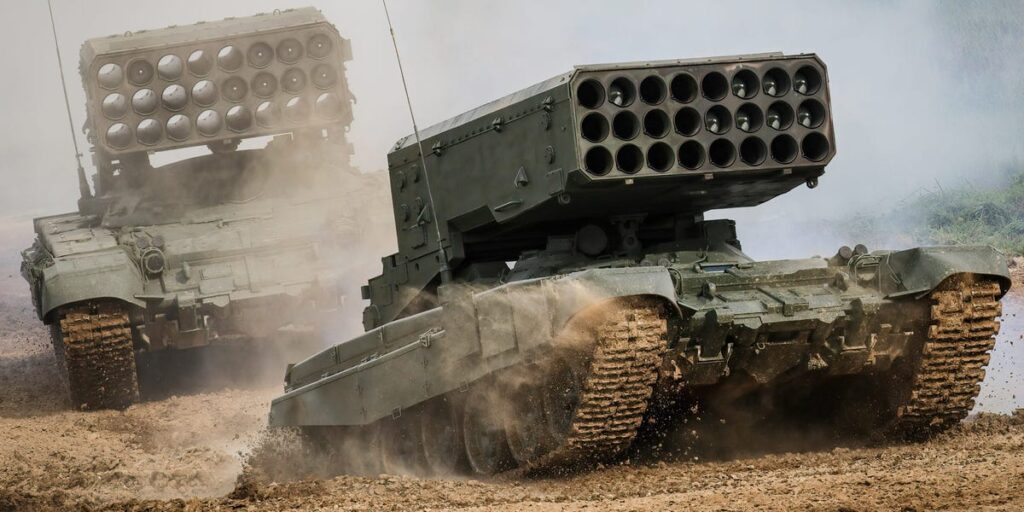Ukraine’s drone industry has developed a wide array of new uncrewed ground vehicles, but Russian forces are innovating with their own designs, too.
While Moscow has been testing remote ground-based weapons since the early years of the war, a wider variety of rudimentary — and sometimes unusual — designs have been emerging this summer.
Take, for example, a remote-controlled four-wheel buggy that pro-Russian Telegram channels called an “assault” Termit drone from a battalion of the 58th Guards Combined Arms Army.
Instead of a weapons system, it’s fitted with a chair that can accommodate a single soldier. Its rear can stow weapons, food, and water containers, the popular Russian Telegram channel Military Informant wrote in a post on Wednesday.
Notably, this Termit drone variant leaves the soldier completely exposed.
Another unique type of Russian logistics ground drone was recently filmed by a Ukrainian first-person-view drone. A clip published on Sunday by Ukrainian drone crowdfunding activist Serhii Sternenko shows that the Russian design essentially featured an open box on wheels.
Sternenko wrote that the ground drone was destroyed and was transporting provisions near the front lines.
On Thursday, a Russian page dedicated to armor and artillery systems published schematics of a tracked, uncrewed multiple-launch rocket system that can fire 10 munitions at once.
The page, Bvtv.Info, wrote that the ground drone was being developed by a Moscow-based engineering firm.
The drone appears to resemble the TOS-1A, a Soviet multiple-launch rocket system mounted on a tank chassis and operated by a three-person crew. However, the TOS-1A features 30 barrels, triple that of the new drone.
Russian forces have also been experimenting with carrying explosives via remote-controlled hoverboards. One popular Russian military blogger, Two Majors, published several clips in April of a ground drone built with two hoverboard scooters.
“They can be used as kamikaze vehicles, as vehicles with a smoke screen, as self-propelled observation vehicles, and even for demining,” the Telegram channel wrote, asking followers to donate such scooters to the Russian military.
Another Russian Telegram channel, Victory Drones, published images in May of similar ground drones fitted with TM-62 anti-tank mines.
“The main advantages of such drones are stability provided by gyroscopes and low cost, which makes it possible to use them on a mass scale,” it wrote.
Then there’s the “Dronobus.” On August 8, the Russian state news agency TASS published photos of a ground-based uncrewed vehicle that acts as a roving mothership for fiber optic attack drones.
TASS wrote that Russian defense engineers are developing the Dronobus, which it reported can accommodate two fiber optic drones with 15-km cables.
Russian forces have been making new ground-based drones for years, such as a tracked platform with the Kornet anti-tank missile system that one unit said it tested in March 2023.
But the appearance of more varied designs comes as Moscow and Kyiv vie for any possible advantage with uncrewed ground vehicles.
In April, Russia’s defense minister Andrey Belousov said Russian firms and volunteer organizations had developed “several hundred ground robotic systems.”
“This year we plan to deliver an order of magnitude more,” Belousov said.
Meanwhile, Ukraine has been marshaling resources to develop its own new ground-based combat drones, using them to fire at enemy positions, evacuate the wounded, gather intelligence, or drop explosives.
Dubbed “iron soldiers” by Ukrainian officials, the use of such combat systems grows more critical as prolonged war strains Ukraine’s supply of fresh troops.
Ukraine says its soldiers are outnumbered three to one in favor of Russia.
Read the full article here


